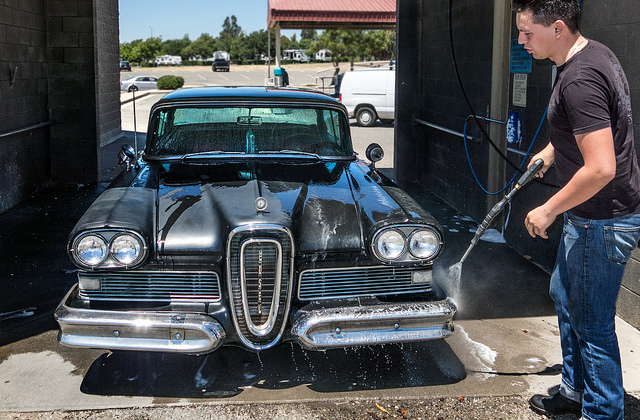Trains, Planes and Automobiles .. The quarter acre dream has passed, garages are often non-existent and you have run out of room for your polished piece of joy. What to do? Store it!
What are your options?
Some self-storage and vehicle storage facilities will provide outdoor parking only, while others will provide covered space or fully enclosed units. Look for additional facilities available for vehicles either on premise or close including wash-bays and petrol stations.
Before you put your vehicle into storage:
Measure - I always measure my car (plus me - so I can get in and out) before I drive it into a self storage space. A unit can often look bigger than it is, so it does pay to check that you can easily drive in and out without causing damage to your car or the unit.
Air Conditioning - Set the air conditioning to 're-circulate'. This will shut the ventilation system off to the outside and prevent little nasties from entering. If you are storing in an area when this is a worries seal off the air intake and tail pipes as well, rubber gloves are great for this.
Spic and Span - Clean both the interior and exterior thoroughly, whether stored inside or out this will help protect your first love from mildew, rust and rodents. Silica or moisture absorbers are also great inside the car to protect from moisture and odour buildups. A good storage facility will take measures to protect against rodents, but do make sure to check as rodents will often chew electrical wiring and anything else they deem edible inside stored vehicles.
Fuel Systems - When storing for a long time replace all fluids including transmission fluid, oil, antifreeze, power steering and brake fluid. A fresh tank of fuel and a fuel stabiliser are also recommended to prevent corrosion in the fuel lines.
Battery - Either disconnect the battery or complete remove from the car (this prevents leakage).
Tyres - Ensure tyres are at there full pressure, this will avoid flat spots on a car not being driven for a long period of time.
Brakes - Dis-engage parking brakes and leave manual cars in neutral. Use vehicle blocks to stop movement. This will protect your brake drums from sticking.
COVER COVER COVER - If you are storing outdoors, cover your vehicle to protect from moisture (rust prevention) and other elements. Even if indoors a cover will also help to protect from dust and any other damage if you have other items stored in your unit. Choose your cover carefully, it is worth spending extra money on a cover that won't trap moisture or scratch an expensive paint job.
When in storage what will be required of me?
Insurance - Your storage facility will not be covered for theft or damage to your vehicle while in storageCheck with your insurance company whether your car is covered while in storage, you may need to take out additional or different insurance during this period. Your storage facility may also be able to provide insurance options.
Current WOF and Registration - You will be required to show a current warrant and registration (or exemption paperwork).
Your car will be required by a storage facility to be in working order and you will need to show identification and proof of insurance.
Most self storage facilities will not allow vehicles to be worked on in storage, check with your storage facility first if that is your intention.
Last but not least
Take your baby for a drive, show it some love and let it know you are coming back!
I




No comments:
Post a Comment